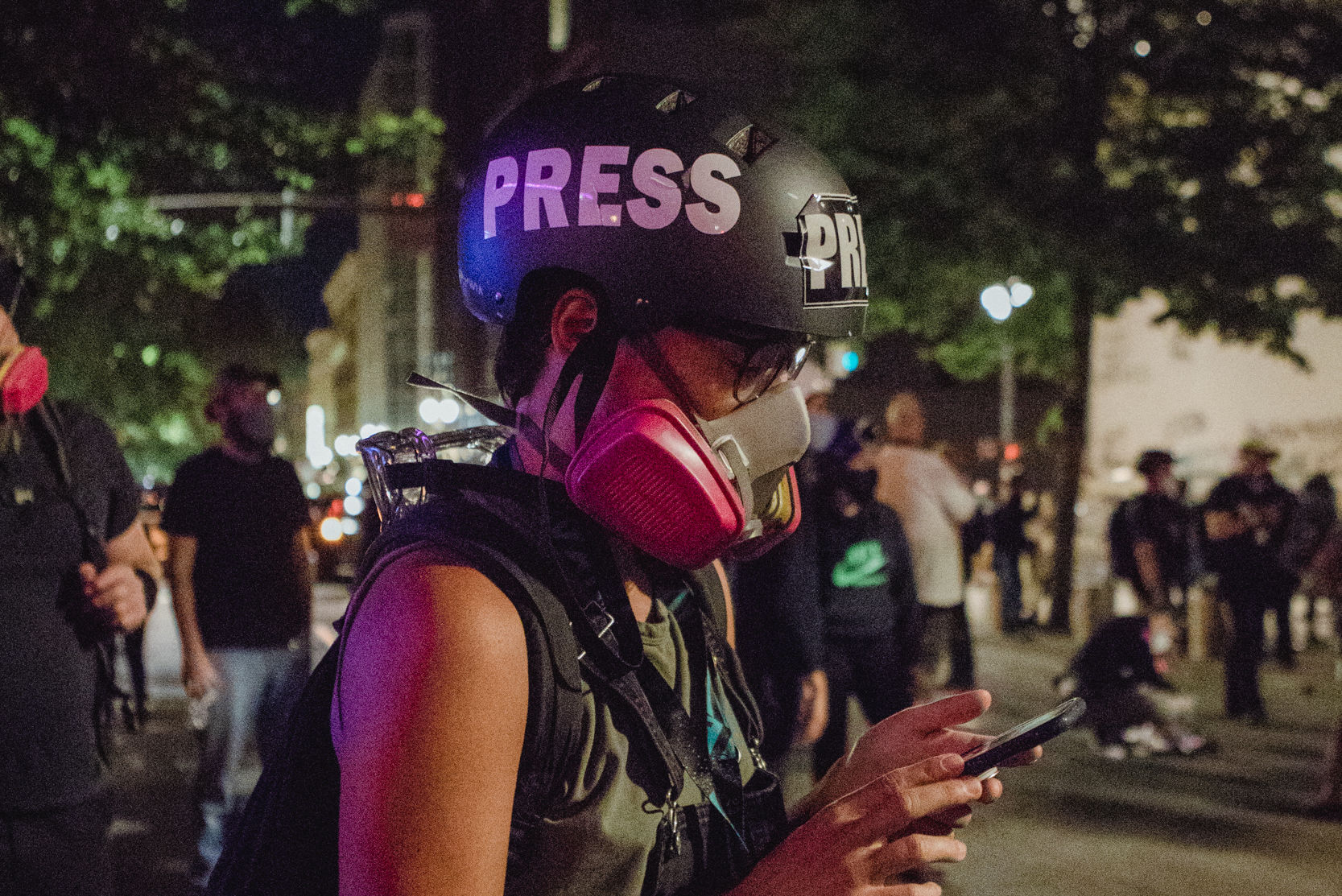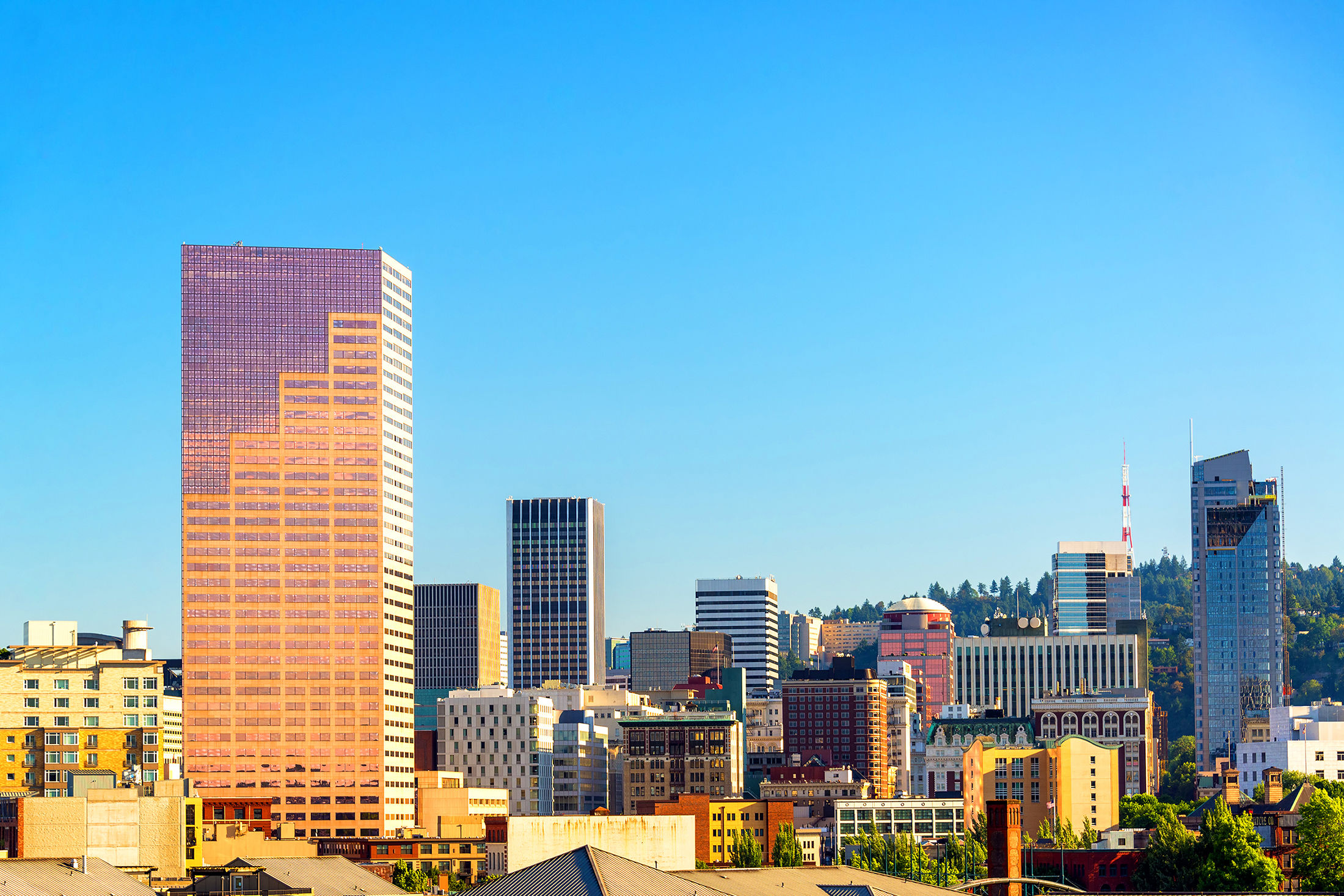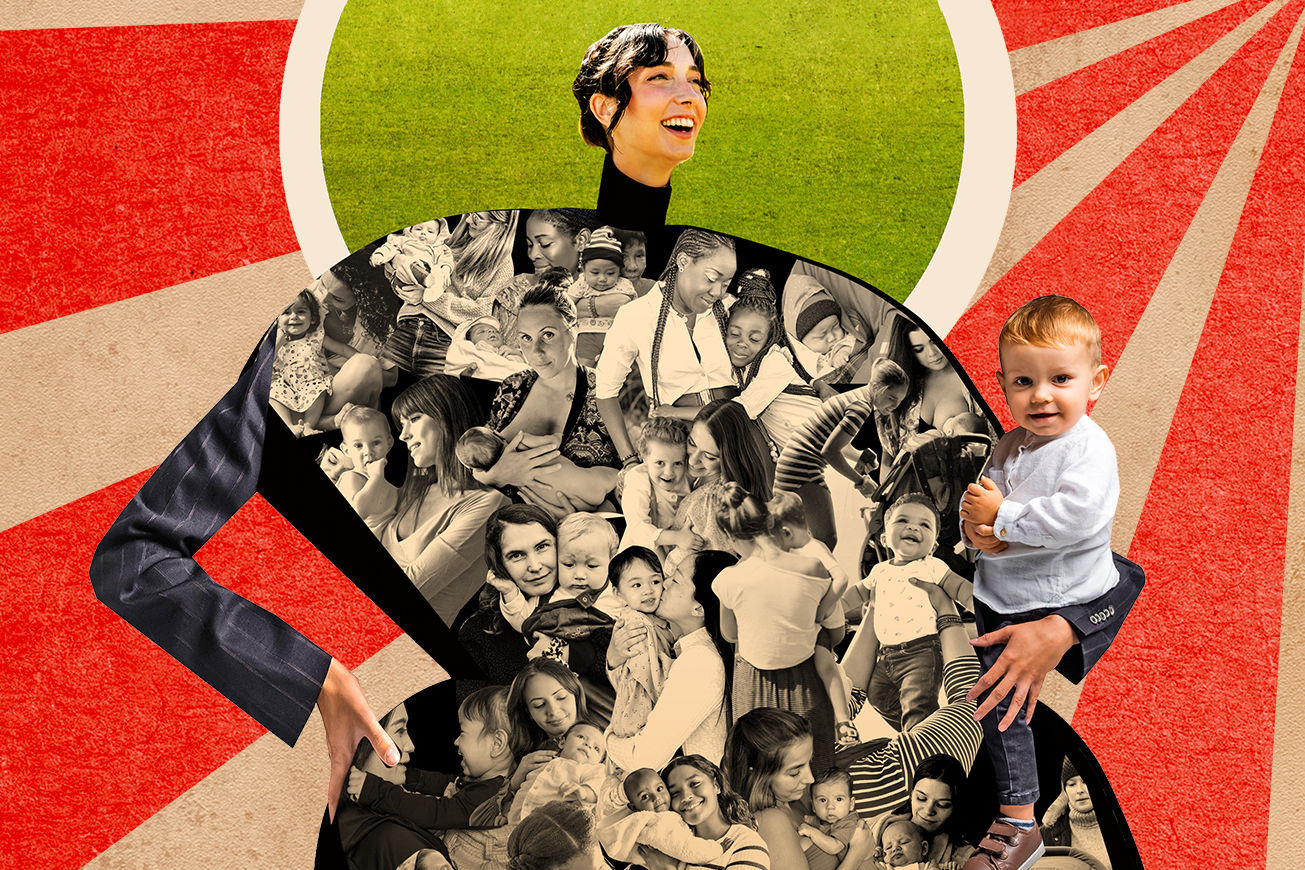
Federal Officers and Portland Police Are Working from the Same Playbook
It’s 5:30 p.m. on July 21. As I type this, reporters from the Washington Post, ABC, NBC, and other national outlets are roaming the streets of downtown Portland, perhaps taking photos of graffiti or interviewing folks standing in line for free food at Riot Ribs. They’re trying to capture the story of Portland’s nightly protests, ideally via neat sound bites by moms in matching yellow T-shirts. But it’s difficult to fully understand the dynamics of a 55-day protest when you’re showing up on day 53. And the New York Times? She doesn’t even go here.
I, on the other hand, go here. I’ve documented the protests on Twitter for the majority of the past 50+ nights. But my ability to really get it is also limited. After all, the Portland protests were spurred by the murders of George Floyd and Breonna Taylor, and bolstered by lingering grief over the deaths of Quanice Hayes, Kendra James, Patrick Kimmons, Jason Washington, and other Black Portlanders killed by police. And as a white-passing person, I will never understand what it’s like to be Black in America. Unfortunately, Portland’s overwhelmingly white media landscape means that you’re stuck with me, for now.
What I’ve learned over seven plus weeks of witness is that by the time OPB broke the news that federal officers were snatching protesters into unmarked vans at random, nothing about that concept felt particularly surprising to the people who had been attending protests every night since late May. To us—journalists, protesters, legal observers—it was just another incremental escalation in the tactics used by law enforcement against largely peaceful demonstrators.
(I say “largely peaceful” because small groups of protesters sometimes engage in graffiti, start campfire-style fires, light fireworks, or build “barricades” out of Dumpsters and fencing. I’ve also seen people lob plastic water bottles—and occasionally other objects, from glass bottles to animal feed—in the direction of officers wearing riot gear. To be very clear, I have never felt unsafe by the actions of a protester. I cannot say the same about law enforcement.)
By July 16, when the OPB story broke, federal agents had been stationed at the Mark O. Hatfield US Courthouse for roughly two weeks, sent by President Trump to quell protests and protect federal buildings. (This is likely a consequence of Trump’s June 26 executive order “on protecting American monuments, memorials and statues and combating recent criminal violence.”) By July 16, I had already witnessed federal officers fire tear gas and pepper bullets indiscriminately at largely peaceful crowds without warning, sometimes bull-rushing the group so fast it was difficult for me to stay ahead of the riot line.
Officers had already arrested several protesters on federal charges of disorderly conduct, destruction of property, “creating a hazard,” and/or assault on a federal officer. (The assault charges stem not from physical violence, but from protesters allegedly shining laser pointers at officers.) On at least one occasion, a protester allegedly tugged on the door of the courthouse and was immediately dragged inside by federal agents, horror-movie-style.
But while national focus is currently trained on the federal agencies (a mixture of Department of Homeland Security’s Federal Protective Service, Immigration and Customs Enforcement, and Customs and Border Protection, plus the Department of Justice’s US Marshals Service) that currently guard the courthouse, let’s not lose sight of the Portland Police Bureau, the original target of many protesters.
Many of the feds’ tactics, which have been summarily denounced by Mayor Ted Wheeler and other city officials, are strikingly similar to those used by PPB and its many law enforcement allies. (At least eight agencies have helped police protests, including the Multnomah County Sheriff’s Office.) For instance, the federal agents’ uniforms do not seem to include badge numbers, names, or any other personal ID info. This is not new. Over the last several weeks, PPB has also refused to identify its officers in any transparent manner, citing fear officers will be doxed. Instead of names or official badge numbers, PPB officers wear two-digit personnel numbers in the field, often written on duct tape in Sharpie.
How can civilians match personnel numbers with names? Portland attorney Alan Kessler filed records requests to obtain this information, and was told he could learn the names of the officers only if he provided the officers’ names. I personally contacted the Portland Police Bureau with a similar request for names, and was ignored.
What this means, of course, is that Portlanders can be gassed, chased, shot at, and arrested by local and federal officers they’re unable to identify or hold accountable. Often, journalists aren’t even able to tell which law enforcement agency is on the ground; the only clues are uniform color and a small patch with an agency’s insignia, which is extremely hard to see in the dark, from a distance, through clouds of tear gas, while you’re being shot at.
Federal agents have also grabbed headlines for shooting unarmed protester Donovan La Bella in the head with crowd-control munitions, causing severe injury. Again, this tactic, while deeply troubling, is not new. Since June, PPB has been under scrutiny for its use of dangerous crowd-control munitions. On one occasion, I witnessed Portland police officers shoot a protester in the head with “less-lethal” munitions from close range on SW Broadway. The protester, who appeared to be unarmed and complying with lawful orders, fell to the ground, bleeding from the head, and were treated by street medics as PPB officers retreated on the rails of a riot van.
On another occasion, dozens of demonstrators were peacefully standing on SW Third Avenue when one protester hopped the chain-link fence that, at the time, blocked off the front of the Justice Center. A minute later, MSCO officers burst out of the building without warning, shooting hard foam munitions indiscriminately into the crowd. I saw one protester shot in the back of the neck while trying to retreat—they tried to receive treatment from a medic but were chased out of the park by officers. I took photos of another person who had been shot in the head during that same incident. They were covered in blood but still protesting.
Let’s skip a lengthy discussion of tear gas (tl;dr: both Portland Police and federal agencies use tear gas, although PPB can currently use it only under specific circumstances, while feds use it copiously via canisters and this totally bizarre, medieval-looking device). It’s time to talk about vehicles: Have Portland Police been pulling people into unmarked vans? As far as I can tell, no. But they have dragged people out of their cars and into clouds of tear gas on multiple occasions.
Is “unidentifiable federal officers pulling protesters off the street into unmarked vans and arresting them for seemingly no reason” truly a stretch from “unidentifiable police officers pulling protesters off the street and out of vans and arresting them for seemingly no reason”? It’s a natural escalation of what was being done by local police before the federal agents even arrived.

Tuck Woodstock in downtown Portland
Image: Celeste Noche
It’s now 11:46 p.m. and, as I type this, police brutality is once again happening at the protest against police brutality. Hundreds of journalists and protesters (including, yes, the mom-bloc) are being tear-gassed and assaulted by federal agents outside the federal courthouse. This time, the entire world is watching.
I’d typically be out there in a respirator and a helmet, posting videos to twitter. But this night (July 21) I’m staying home to tell you that none of this is new. And once the news cycle moves on, and the national outlets leave, and the Department of Homeland Security stops blanketing Lownsdale Square in tear gas and releasing reports on graffiti by Portland's “violent anarchists,” Portland Police Bureau will still be here with their own tear gas and pepper balls and batons and bull rushes and violent dispersals, disproportionately targeting the city’s Black and Indigenous residents. Will people still care?




